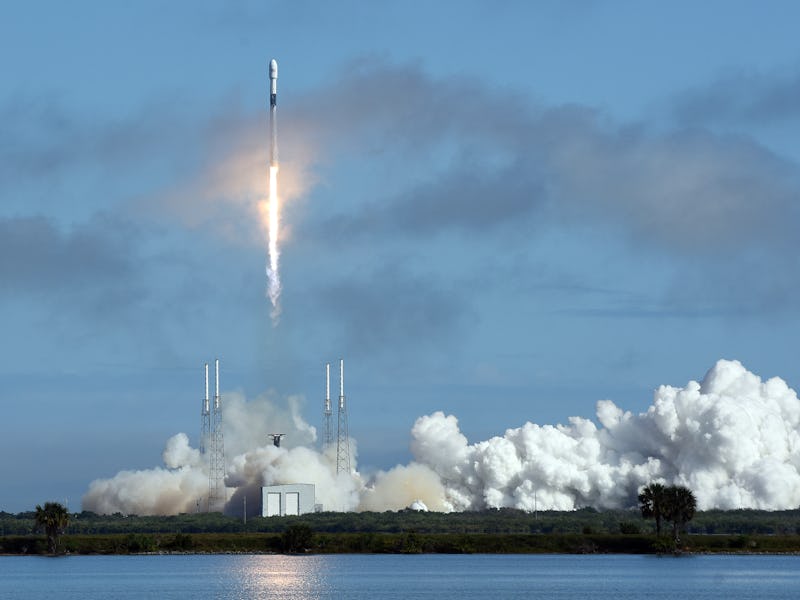SpaceX Starlink's next launch is set to address a major issue
The company's internet connectivity constellation is going to take one of its biggest early issues.

Look, in the sky! Is it a bird? Is it a plane? There's a chance it's a Starlink satellite, and that's bad news for astronomers. Fortunately, SpaceX is taking steps to address that problem with its next launch.
SpaceX's internet connectivity constellation is designed to beam down gigabit-speed internet at double-digit-millisecond latencies when it starts offering services later this year. On Wednesday at 3:37 p.m. Eastern time, the company is planning to launch the seventh batch of 60 satellites from the Kennedy Space Center in Florida. The company has grand plans for its constellation, and it's applied for permission to launch up to 42,000 satellites.
Hours before Wednesday's launch, CEO Elon Musk wrote on Twitter that the company has been taking steps to make the satellites less visible from Earth:
We are taking some key steps to reduce satellite brightness btw. Should be much less noticeable during orbit raise by changing solar panel angle & all sats get sunshades starting with launch 9.
Musk's most recent comments.
That's good news for astronomers, who have voiced concerns that early Starlink satellites have been remarkably visible from Earth. Fans in the United Kingdom have been watching the skies this week, as the satellites are expected to be visible at various times until Saturday. Tracker websites like Heavens Above have been directing people on how to see Starlink in the sky.
Although it sounds like a fun activity, it's drawn criticism from the astronomical community. SpaceNews reported in January that the satellites have a magnitude around five when operating at their 550-kilometer altitude. A higher magnitude number means a lower brightness. The naked eye, which can normally see night sky objects up to about a magnitude of six, would only spot them on particularly dark nights. The satellites are brighter, however, when they first launch as they initially orbit lower.
That didn't go down well with astronomers, especially after observatories started seeing the early batches in their observations. London’s Royal Astronomical Society noted the launch of the first series of satellites in May 2019 “with concern." Astronomers from the European Southern Observatory discovered that around three percent of long exposures would be ruined by the satellites.
SpaceX president Gwynne Shotwell has claimed these issues were not foreseen prior to launch. In December 2019, she told SpaceNews that “no one thought of this. We didn’t think of it. The astronomy community didn’t think of it.” Patrick Seitzer, a research professor at the University of Michigan’s department of astronomy, told Inverse at the time that "what no one expected was how bright these satellites would be...easily seen with the unaided eye."
The company has taken steps to mitigate these issues. It's started holding monthly meetings with the American Astronomical Society to work to understand the issue. In the batch of 60 sent up in January 2020, SpaceX included a darker coating on one satellite to see if that could help reduce their visibility.
“It does appear that the special darkening treatment has worked,” Jeremy Tregloan-Reed from the University of Antofagasta in Chile told Forbes in March. He estimated around a 55 percent reduction in brightness compared to other Starlink satellites, but concluded that they're "still way too bright" and can easily be spotted by telescopes. Although the newer satellite had a measured magnitude of 7.57, a lower brightness than the five-magnitude craft that came before and enough to hide from the naked eye, telescopes can detect magnitudes of eight or higher.
The Inverse analysis
SpaceX's new steps could help keep Starlink in the dark, but previous comments suggest the company is flying blind to an extent.
Shotwell said in her January interview that "we don't know" if the company's mitigations will be effective, adding that the company follows a "test, learn and iterate" process. Tregloan-Reed shared his findings about the January 7 batch in mid-March, but the craft can take up to several months to reach their full height.
With these iterative changes, it may not be clear for a while what lessons SpaceX can take on for future satellites.